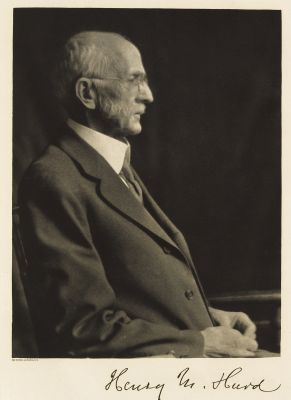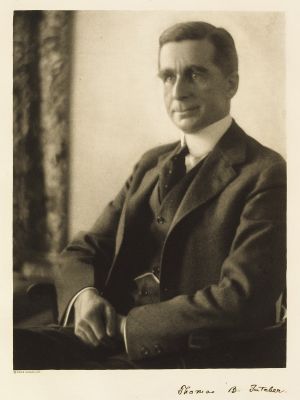
Title
Max BroedelArtist
Ulmann, Doris (American, 1882-1934)Publication
A Book of Portraits of the Faculty of the Medical Department of the Johns Hopkins UniversityDate
1922Process
PhotogravureAtelier
William E. RudgeImage Size
21 x 15.8 cm
Active between 1918–1934, Doris Ulmann’s work reflects the influences of multiple art movements, illustrating a major shift in American photographic portraiture. She was trained during the height of pictorialism, a movement that sought to elevate photography to a fine art by encouraging artists to manipulate the image, most often by deliberately blurring the subject in order to intensify atmosphere. As she began publishing portraits of prominent writers, actors and intellectuals in magazines, however, her work took on a much more photojournalistic approach, incorporating the clean lines and sharp focus that was becoming popular with modernism.
Ulmann’s first main body of work consists of studio portraits of the literary and cultural elite, with an emphasis placed on the inclusion of professional African Americans and women—a rare pursuit at the time. With each portrait, Ulmann sought to convey enough of the individual’s personality and character for viewers to perceive a sense of what they were like as a person. Typically shot inside the comfort and privacy of her apartment in New York City’s Upper East Side, the subjects appear at ease and perhaps more approachable than they would have been in public settings.
Ulmann’s second book of portraits, now published under her maiden name, is ‘second in a series’ as it is produced to the same high standards as her first book, The Faculty of the College of Physicians & Surgeons, Columbia University in the City of New York. The thirty-seven photogravures are from photographs made in 1920 and printed in the pictorialist style on beautiful handmade paper.
Reproduced / Exhibited
Gillespie, Sarah K. Vernacular Modernism: The Photography of Doris Ulmann, Athens, Georgia : Georgia Museum of Art, University of Georgia, 2018. pl. 42
Jacobs, Philip W. The Life and Photography of Doris Ulmann, Lexington The University Press of Kentucky, 2015. fig. 32











